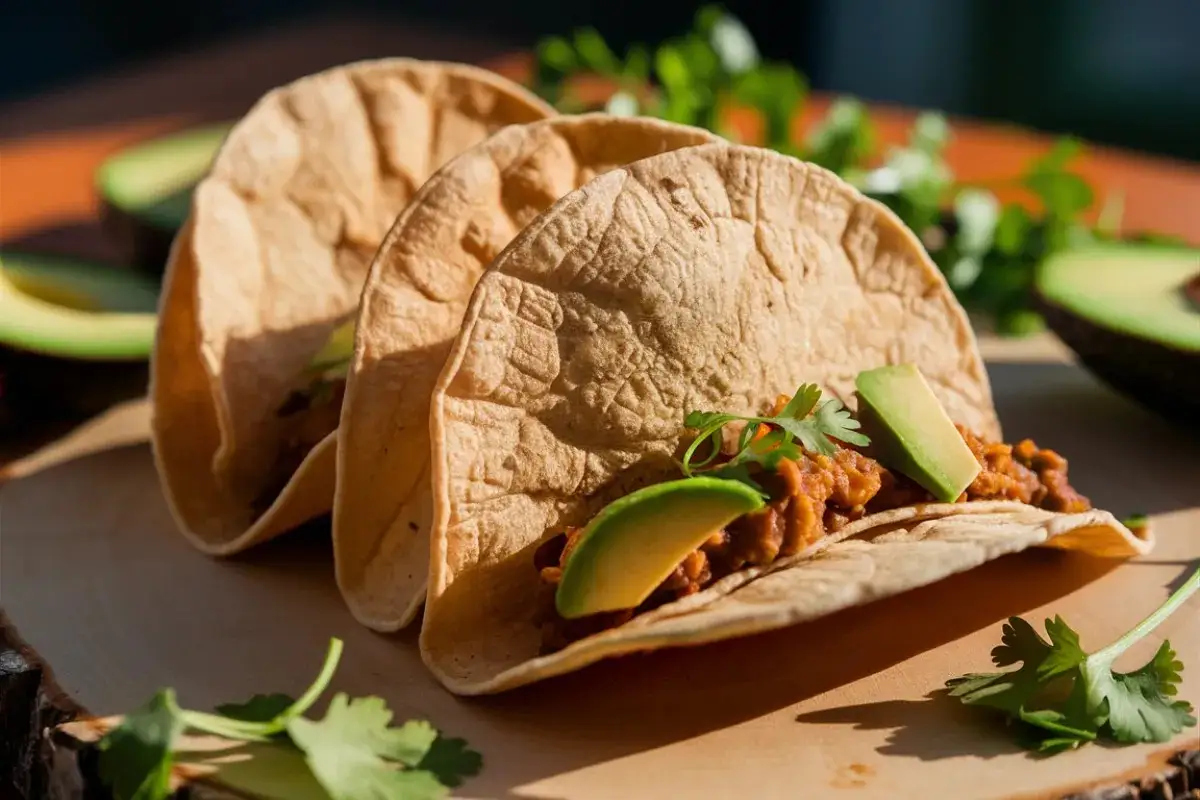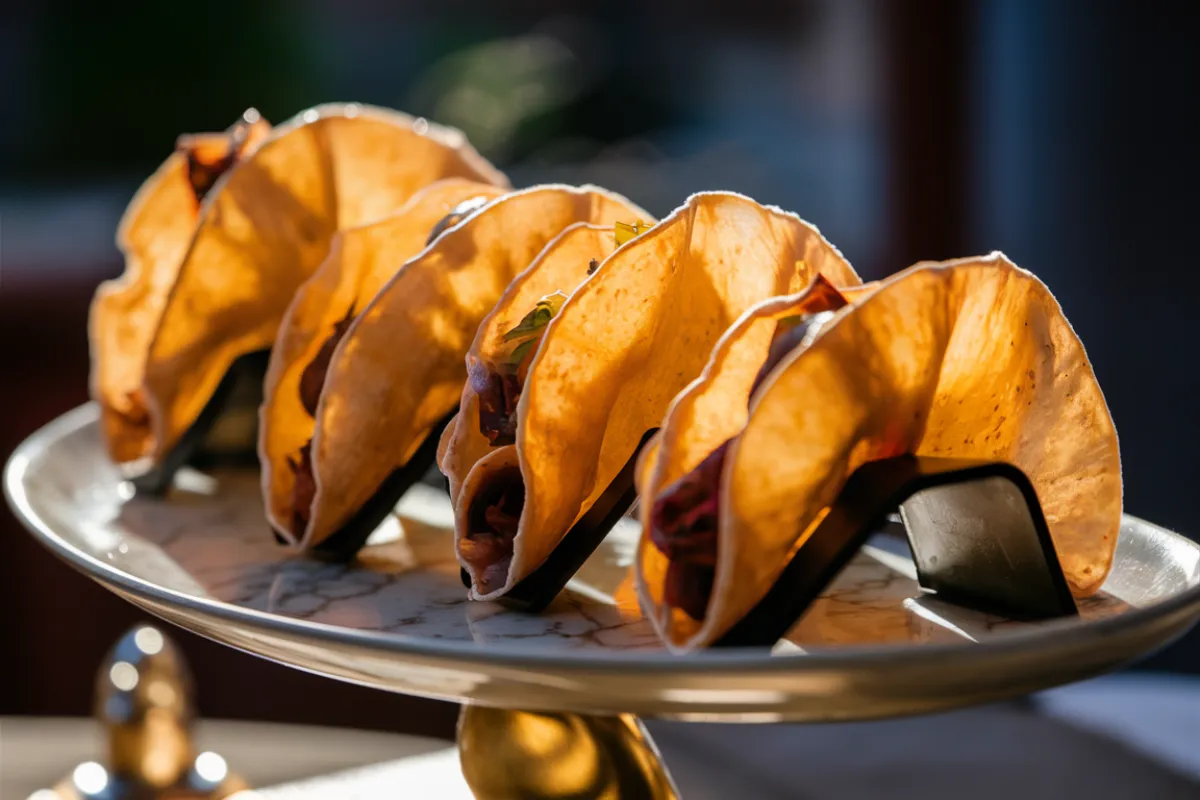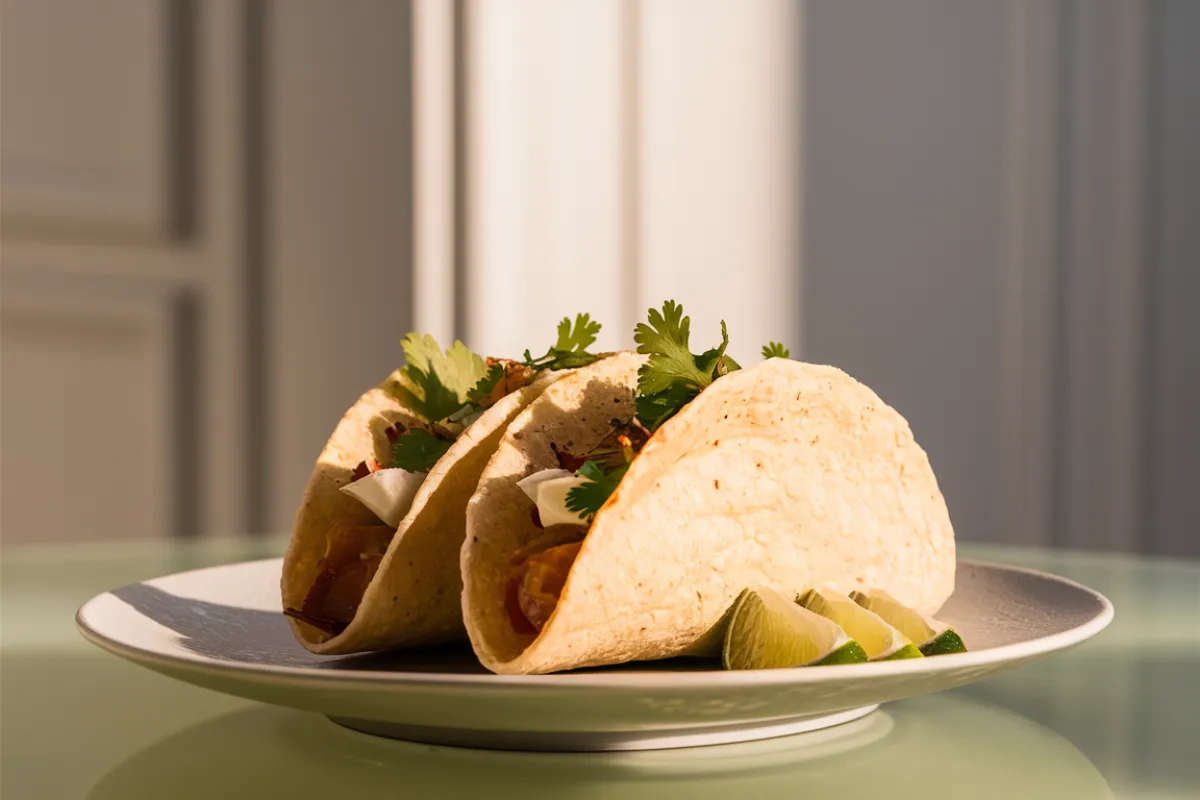Taco Bell taco shells are a staple in the fast-food industry, particularly in their popular soft tacos. Known for their delicious taste and texture, these taco shells play a crucial role in making Taco Bell a favorite for many. In this article, we will explore what goes into making these soft taco shells, including the ingredients, manufacturing process, and the culinary significance they hold.
A Brief History of Taco Bell
To fully appreciate the evolution of Taco Bell’s menu, including the development of their soft taco shells, it’s important to understand the history of the brand itself. Taco Bell was founded by Glen Bell in 1962 in Downey, California. Originally, the restaurant was a small stand serving traditional Americanized versions of Mexican food, such as tacos and burritos.
Over time, Taco Bell grew rapidly, expanding its menu and refining its recipes to meet the demands of a growing and diverse customer base. The introduction of the soft taco as a menu item was a pivotal moment, offering a softer, more malleable alternative to the crunchy taco shell. This innovation allowed for greater versatility in fillings and toppings, which has contributed to the enduring popularity of the soft taco.
What Makes a Taco Bell Soft Taco Shell?

The soft taco shell at Taco Bell is essentially a flour tortilla that serves as the vessel for a variety of fillings, from seasoned beef to beans and vegetables. The choice of a flour tortilla over a traditional corn tortilla for their soft tacos was a strategic decision that caters to the texture preferences of a broad audience. Let’s explore what makes these flour tortillas unique.
Ingredients in Taco Bell Soft Taco Shells
They craft the soft taco shell from a combination of simple yet essential ingredients that come together to create a pliable and tasty base for the taco. Here’s a breakdown of those ingredients:
- Wheat Flour: This is the primary ingredient in Taco Bell’s soft taco shells. Wheat flour gives the tortilla its structure and makes it soft and chewy. It also provides the characteristic mild flavor that complements the various fillings without overpowering them.
- Water: Water is crucial for holding the ingredients together. It moistens the flour and activates the gluten, giving the dough its stretchiness and making it easier to roll into thin tortillas.
- Vegetable Shortening: Vegetable shortening, often made from hydrogenated soybean oil, gives the tortillas a tender texture. This ingredient also helps to prevent the tortillas from drying out and becoming brittle.
- Leavening Agents: To give the tortillas a slightly puffy texture, Taco Bell uses leavening agents like sodium bicarbonate and sodium aluminum sulfate. These ingredients cause the dough to rise a bit during cooking, making the tortillas lighter and airier.
- Salt: Salt is added to enhance the flavor of the tortilla. It’s a crucial ingredient that balances the taste of the dough and complements the fillings used in the taco.
- Preservatives: To ensure that the tortillas remain fresh during storage and transport, Taco Bell includes preservatives like calcium propionate and sorbic acid. These ingredients prevent the growth of mold and bacteria, extending the shelf life of the tortillas. For more information on preservatives, check out the science behind food preservatives.
This commitment to quality sourcing helps Taco Bell provide a consistent product that meets customer expectations in both taste and quality. For those interested in making their own taco shells, learning how to make taco shells in a pan can be a fun and rewarding experience.
The Role of Each Ingredient
Each ingredient in the soft taco shell has a specific role that contributes to the overall quality and flavor of the product. For example, the wheat flour provides the structure and chewiness, while the vegetable shortening adds tenderness and moisture. The leavening agents ensure that the tortillas are not too dense, making them easier to fold around the fillings.
Moreover, the use of preservatives is a practical necessity in the fast-food industry, where products need to be transported over long distances and stored for extended periods. These preservatives help maintain the quality of the tortillas until customers are served.
The Manufacturing Process of Taco Bell Soft Taco Shells
Creating a consistent product on a large scale requires a well-managed manufacturing process. Taco Bell has perfected this process to ensure that each soft taco shell meets their quality standards. This attention to detail is part of what has made the company so successful, as outlined in the history of Taco Bell.
Dough Preparation
The first step in making the soft taco shells is preparing the dough. Large industrial mixers blend the ingredients to ensure a uniform consistency. You must ensure the dough is well-hydrated, which means balancing the water and flour correctly is crucial. This ensures that the dough is neither too sticky nor too dry.
After mixing, the dough is allowed to rest. This resting period is important because it allows the gluten in the flour to relax, making the dough more elastic and easier to work with. The team then divides the rested dough into portions, with each portion becoming an individual tortilla.
Shaping the Tortillas
Once the dough has rested, you can shape it into tortillas. Large presses flatten the dough into thin, round discs. They carefully control the thickness of the tortillas to ensure consistency. If the tortillas are too thick, they won’t fold properly around the fillings. If they are too thin, they may tear.
They then cook the pressed tortillas on hot griddles or conveyor ovens. The heat causes the leavening agents in the dough to activate, giving the tortillas a slightly puffy texture. They cook the tortillas just long enough to develop light browning spots, a signature characteristic of Taco Bell’s soft taco shells.
Cooling and Packaging
After cooking, the process quickly cools the tortillas to prevent them from continuing to cook and becoming too dry. Staff then stack and package them for distribution. Packaging is done in a way that protects the tortillas from moisture and air, which could cause them to become stale.
Taco Bell ships the packaged tortillas to their locations, where staff use them to prepare soft tacos for customers. Taco Bell designs the entire process, from dough preparation to packaging, to be as efficient as possible while maintaining product quality.
The Culinary Significance of Taco Bell Soft Taco Shells

The soft taco shell is more than just a vessel for fillings; it plays a significant role in the overall experience of eating a taco. The softness and chewiness of the tortilla contrast with the textures of the fillings, creating a satisfying mouthfeel. Additionally, the mild flavor of the tortilla allows the flavors of the fillings to shine, rather than overpowering them.
Versatility in Menu Items
One of the reasons Taco Bell’s soft taco shells are so popular is their versatility. You can use them in a variety of menu items, from the classic soft taco to more elaborate creations like the quesarito (a combination of a quesadilla and a burrito). The pliable soft taco shell easily wraps around different fillings, whether it’s seasoned beef, chicken, beans, or vegetables.
The soft taco shell is also a key component in Taco Bell’s customizable menu. Customers can choose their preferred fillings, sauces, and toppings, and the soft taco shell will accommodate them all. This flexibility is one of the reasons why the soft taco remains a favorite among Taco Bell customers.
The Soft Taco Shell as a Cultural Fusion
Taco Bell’s soft taco shell represents a fusion of Mexican culinary traditions with American fast-food innovation. While the flour tortilla is a staple in Mexican cuisine, Taco Bell has adapted its use in soft tacos to suit the preferences of a broader audience.
Taco Bell’s marketing of its soft tacos reflects this cultural fusion. Taco Bell presents them not just as a fast-food item but as a convenient and tasty way to enjoy Mexican-inspired flavors. The soft taco shell is a perfect example of how traditional foods can be reimagined to create new and exciting products.
The Influence of Regional Preferences
While the basic recipe for Taco Bell’s soft taco shells is consistent across locations, there are some regional variations that cater to local tastes. For example, in certain regions, Taco Bell may offer limited-time or seasonal variations of the soft taco shell that include different flavors or ingredients.
Innovation and Experimentation
Taco Bell has earned a reputation for its innovative approach to fast food, and the soft taco shell exemplifies this creativity. Over the years, Taco Bell has experimented with different types of tortillas and fillings to create new menu items that keep customers coming back.
For instance, the introduction of the Gordita and Chalupa (both of which use a thicker, pita-like shell) was an evolution of the soft taco shell. These items offered a different texture and eating experience while still retaining the familiar elements that customers loved about the soft taco.
Taco Bell has also explored the use of different grains and flours in their tortillas, such as whole wheat or gluten-free options, to appeal to health-conscious consumers. While these options are not always available on the main menu, they represent Taco Bell’s commitment to innovation and meeting the diverse needs of their customers.
The Cultural Impact of Taco Bell Soft Taco Shells

Taco Bell’s soft taco shells have made a cultural impact beyond just being food. They symbolize how the fast-food industry adapts and creates new ideas, transforming traditional foods into something people all over the world can enjoy.
The Role of Taco Bell in Popularizing Mexican-Inspired Cuisine
When Taco Bell first introduced its menu, Mexican food was not as widely available or popular in the United States as it is today. Taco Bell played a significant role in introducing Mexican-inspired dishes, like the taco, to a mainstream audience. The soft taco shell was a crucial part of this effort, offering a familiar yet novel way for customers to experience these flavors.
The success of Taco Bell and its menu items, including the soft taco, has contributed to the growing popularity of Mexican cuisine in the United States and around the world. Today, tacos and other Mexican dishes are a regular part of the American diet, and Taco Bell has played a key role in this culinary shift.
Taco Bell in Pop Culture
Taco Bell’s soft taco shells have also found their way into pop culture. From being featured in movies and TV shows to becoming the subject of internet memes, Taco Bell and its menu items have become a part of the cultural fabric.
For example, the 1993 movie “Demolition Man” featured Taco Bell as the only restaurant left in a future world. This appearance made Taco Bell a cultural icon and sparked conversations about its impact on American food culture.
Taco Bell has also embraced its pop culture status by working with artists, celebrities, and brands to create special menu items and merchandise. These partnerships have made the brand even more popular in today’s culture.
The Global Reach of Taco Bell
While Taco Bell started as a small stand in California, it has since grown into a global brand with locations in over 30 countries. The soft taco shell has played a key role in this expansion because it is a versatile and easily customizable product that can be adapted to suit different tastes and dietary preferences.
In some countries, Taco Bell has added menu items that use local ingredients and flavors in the soft taco shell. This strategy has helped Taco Bell attract a wide range of customers while still keeping the key elements that make the brand recognizable.
The Future of Taco Bell Soft Taco Shells
As Taco Bell continues to expand and innovate, the soft taco shell will likely remain a central part of its menu. However, we can expect to see new variations and adaptations that reflect changing consumer preferences and food trends.
For example, as more people become interested in plant-based diets, Taco Bell may introduce new fillings and toppings for their soft tacos that cater to this growing market. Additionally, advances in food technology could lead to the development of new types of tortillas that offer different textures and flavors.
Frequently Asked Questions (FAQs)
What are Taco Bell soft taco shells made of?
They mainly make Taco Bell soft taco shells from wheat flour, water, vegetable shortening, leavening agents, salt, and preservatives. This mix creates a soft, flexible tortilla that works well with different fillings.
Can I customize the fillings in a Taco Bell soft taco?
Yes, Taco Bell offers a customizable menu where you can choose from a variety of fillings, including seasoned beef, chicken, beans, and vegetables, along with different sauces and toppings.
Are Taco Bell soft taco shells vegan?
They mostly make the tortillas from plant-based ingredients, but they could come into contact with non-vegan items. It’s a good idea to check Taco Bell’s official allergen and ingredient info to make the best choice.
Are there any regional variations of Taco Bell soft taco shells?
Yes, Taco Bell occasionally offers regional or limited-time variations of their soft taco shells, which may include different flavors or ingredients to cater to local tastes.
How are Taco Bell soft taco shells different from traditional Mexican tortillas?
Taco Bell makes its soft taco shells from flour tortillas that are slightly thicker and softer than traditional Mexican corn tortillas. This gives them a texture that appeals to a broad audience.
Conclusion
Taco Bell’s soft taco shells are more than just fast food; they are a result of creative cooking and cultural adaptation. Starting as simple flour tortillas, they have become a staple in the global fast-food industry and have greatly influenced how people enjoy Mexican-inspired food.
The success of the soft taco shell shows Taco Bell’s skill in coming up with new ideas and adjusting to changing tastes. Whether you’re a longtime fan or new to Taco Bell’s menu, the soft taco offers a tasty and flexible way to enjoy the flavors that have made Taco Bell popular around the world.
As we look to the future, it’s exciting to think about how Taco Bell will continue to evolve its menu and introduce new and innovative ways to enjoy the soft taco shell. Whatever the future holds, one thing is certain: the soft taco shell will remain a central part of the Taco Bell experience, delighting customers with its perfect combination of texture, flavor, and versatility.

